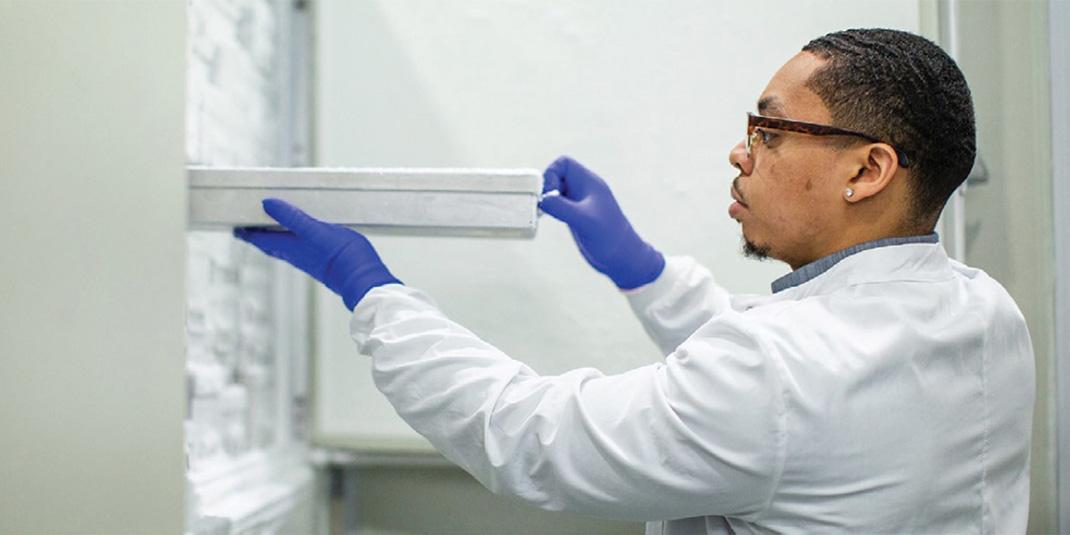How to Optimize Biosample Collections to Meet Future Demand

As the demand for biospecimens continues to increase, biorepositories must develop strategies to optimize utility, efficiency, and scope of their biosample collections. Modern technology solutions must not only address sample tracking and annotation but also enable sample sharing wherever possible. How can this be implemented?
Once upon a time, biosamples were collected and used for a single, specific research purpose – and when another research question was posited, another sample was collected to conduct another experiment. Those days are long gone, of course – and modern research relies on large, well-annotated biosample collections that can be employed in multiple research projects.
Biorepositories and biobanks fill this need by providing sample storage space and infrastructure for researchers. But the current advent of high-throughput sequencing and screening strategies in modern research generates accelerated demand for specialized biosample collections. How can this be met?
At least three aspects are important to meet future demand.
First, sample numbers and biospecimen variety in biosample collections should increase by intensified sample acquisition. Second, sample access within collections should be improved and sample tracking and annotations be more comprehensive and precise – without compromising donor privacy. Third, sample sharing should be promoted. While the first aspect may primarily fall under the responsibility of hospitals and research organizations, the second two are directly related to the operational activities of biorepositories.
One of the major assets of an internationally operating biorepository like Azenta Life Sciences is their ability to offer sample management expertise. Providing precise, thorough, and reliable sample tracking and sample information is arguably as important as the number of different sample types and biospecimens present in biosample collections.
However, it is not always easy for biorepositories to obtain (and integrate) sample information from the biospecimen procurement site. Recent efforts have shown feasibility of data integration between clinics and biorepositories using existing open source tools. This creates hope that such integration may soon become easier.1
Precise sample tracking in biosample collections allows downstream sample consolidation and relocation efforts, if warranted, by return-on-investment considerations.2 More importantly, accurate and detailed biospecimen annotations allow precise sample selection from biosample collections for each individual research project or application by the customer. In particular, utility is a database where sample tracking and other information from a multitude of sources can be integrated and accessed via an easy-to-navigate user interface.
Enter Azenta Life Sciences’ Informatics Solutions.
This system has a few key features that will assist when trying to meet future biosample demands. It helps evaluate sample quality by tracking the processing steps each sample has undergone and the resulting data. It also integrates real-time sample tracking data from sample processing workflows, donor consent, phenotypic patent-level, and clinical data. This allows easy determination of suitability for any given sample from biosample collections for any specific client project.
Notably, multiple access levels within the software promote data security and confidentiality. And each user may gain a different degree of data access depending on clearance level. Of course, patient identifiable data and sensitive information are always encrypted within the database.
Even with these improvements, biorepositories will likely invest in sample sharing strategies to meet future demand. Here, too, excellent sample tracking is key. Recent efforts have produced tools for sharing sample metadata across multiple biorepositories, a strategy of highest importance for researchers who require biosamples that are scarce – i.e. scientists studying rare diseases.3
Public access to sample data from biosample collections is currently under-regulated, and access policies consequently vary wildly between different biobanks.4 This should change and be standardized.
Efforts to streamline the minimum requirements of sample annotations in biorepositories are underway,5 which would let scientists identify specific samples from collections worldwide. In all these efforts, sample donor concerns that pertain to privacy issues should be taken seriously, and biosample sharing must incorporate strict rules concerning donor consent.6
With investment into first-class sample tracking and annotation solutions and sample sharing policies and methods, biorepositories would be well-equipped to take on the future.
References
1. Bouzille G, Jouhet V, Turlin B, Clement B, Desille M, Riou C, et al. Integrating Biobank Data into a Clinical Data Research Network: The IBCB Project. Stud Health Technol Inform. 2018. 247:16-20. http://ebooks.iospress.nl/publication/48745
2. Shea KE, Wagner EL, Marchesani L, Meagher K, Giffen C. Efficiently Maintaining a National Resource of Historical and Contemporary Biological Collections: The NHLBI Biorepository Model. Biopreserv Biobank. 2017. 15(1): 17–19. doi: 10.1089/bio.2016.0112. https://www.ncbi.nlm.nih.gov/pmc/articles/PMC5326980/
3. Gainotti S, Torreri P, Wang CM, Reihs R, Mueller H, Heslop E, et al. The RD-Connect Registry & Biobank Finder: a tool for sharing aggregated data and metadata among rare disease researchers. Eur J Hum Genet. 2018. doi: 10.1038/s41431-017-0085-z. https://www.nature.com/articles/s41431-017-0085-z
4. Langhof H, Kahrass H, Sievers S, Strech D. Access policies in biobank research: what criteria do they include and how publicly available are they? A cross-sectional study. Eur J Hum Genet. 2017. 25(3):293-300. doi: 10.1038/ejhg.2016.172. https://www.ncbi.nlm.nih.gov/pmc/articles/PMC5315509/
5. Merino-Martinez R, Norlin L, van Enckevort D, Anton G, Schuffenhauer S, Silander K, et al. Toward Global Biobank Integration by Implementation of the Minimum Information About BIobank Data Sharing (MIABIS 2.0 Core). Biopreserv Biobank. 2016. 14(4):298-306. doi: 10.1089/bio.2015.0070. https://www.liebertpub.com/doi/10.1089/bio.2015.0070
6. Klingstrom T, Bongcam-Rudloff E, Reichel J. Legal & ethical compliance when sharing biospecimen. Brief Funct Genomics. 2018. 17(1):1-7. doi: 10.1093/bfgp/elx008. https://www.ncbi.nlm.nih.gov/pmc/articles/PMC5859993/